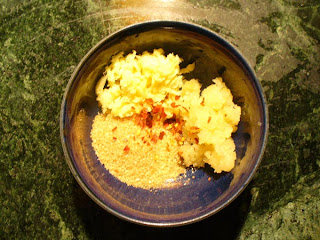Yes, I know lots of Chinese now use electric rice-steamers, but I prefer to cook mine the analogue way. Apart from not having the room for storage (mine is somewhere deep in the bowels of the shed), it's the culinary difference between driving automatic and manual.
Preferring the feel of the gear stick in my hand, here's how I do it.
First, choose your rice.
The easiest and quickest to cook is white rice. I was brought up on long grain American rice but I really like white basmati and fragrant Thai. The problem is that, being refined, with the husk and nutrients that sit just under the skin removed, you get a hypoglycaemic hit as all those carbohydrates make demands on your poor old pancreas to pump out insulin.
However, working on the principle that a little of what you fancy is what the doctor ordered, enjoy it but maybe not every day.
I usually use organic brown basmati as I get the nutrients plus roughage and it doesn't take quite as long to cook as standard brown rice.
 For two people, add about a mug of dry raw rice to a small saucepan and give it a rinse under cold running water. White rice has a lot of loose starch on the surface so you'll have to do this several times, swirling it with your hand, until the water runs clear.
For two people, add about a mug of dry raw rice to a small saucepan and give it a rinse under cold running water. White rice has a lot of loose starch on the surface so you'll have to do this several times, swirling it with your hand, until the water runs clear. Then, instead of fiddly measuring devices, add water up to a depth of one knuckle above the white rice.
Then, instead of fiddly measuring devices, add water up to a depth of one knuckle above the white rice. No matter how much you cook, the principle is one knuckle depth of water above the rice. This is true of white, but for some strange reason, it's a little less with brown. About three-quarters should do it.
 Add a sprinkle of salt or low-sodium salt. I cheat and crumble in one Kallo organic chicken stock cube.
Add a sprinkle of salt or low-sodium salt. I cheat and crumble in one Kallo organic chicken stock cube. Place a tight lid on top and bring to the boil over a high heat. Then turn all the way down — you want the lowest heat so make sure the pan is on the smallest ring. Simmer for 15 minutes for white Thai fragrant and basmati, 20 minutes for long-grain white rice, 40 minutes for organic brown basmati, and ten years, I mean, 50 minutes for standard brown rice.
Whatever you do, DO NOT remove the lid and have a poke around. Control your curiosity and trust me. If you have a glass lid, you'll see little steam holes appearing in the rice as the water is absorbed. If not, think of Schrodinger's Cat. It is both cooked and not cooked until the moment you are allowed to peek. (Dear lord, now I've mentioned cat in a recipe!)
 Remove from the heat at the end of the cooking time, open the lid and give it a stir with a wooden spoon or spatula, and immediately replace the lid so it can continue to steam under its own steam for another five minutes and fluff up.
Remove from the heat at the end of the cooking time, open the lid and give it a stir with a wooden spoon or spatula, and immediately replace the lid so it can continue to steam under its own steam for another five minutes and fluff up.There it is, via the traditional Asian method. Serve with something delicious from this blog.
FOOD SAFETY: There's a technique for removing the arsenic found in rice that Sheffield scientists came up with in 2020. Add raw rice to boiling water and boil for five minutes. Drain (BBC viewers can find comfort in washing under cold running water at this point) and add enough boiling water from the kettle to bring it up to the depth of one knuckle above the rice as above. Because it is hot, do not use your actual knuckle at this stage but measure it with an implement and measure that against your finger. Add lid, bring back to the boil for the usual time minus the five minutes.
EQUIPMENT NOTE: If you don't want to burn your rice, use a pan with a thicker base. I use a steel pan with a thick copper base. But if the rice does catch, Chinese people like the crispy bits, as long as it's not burnt to the point of being bitter.











 What you need
What you need Deskinning garlic clove
Deskinning garlic clove Skinned garlic clove
Skinned garlic clove Ready to crush in the press
Ready to crush in the press … and
… and  The finished product.
The finished product. 
